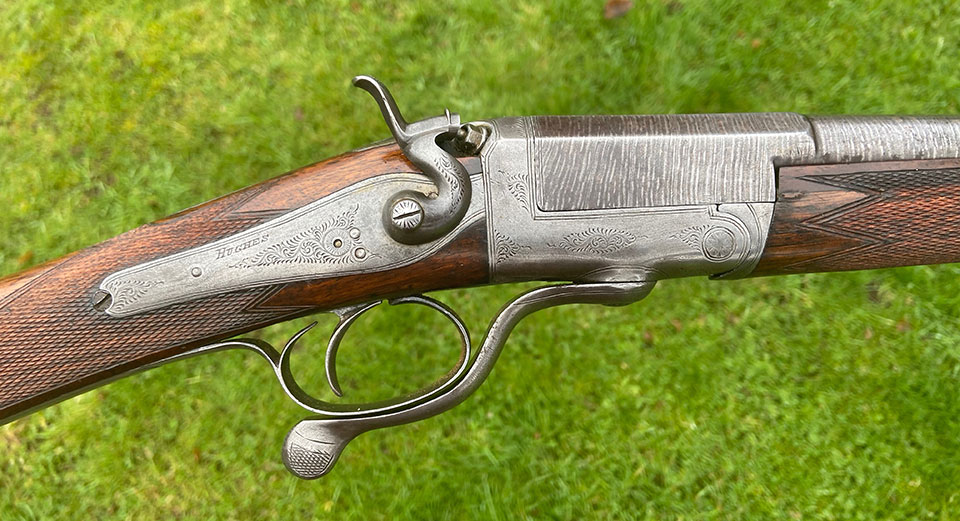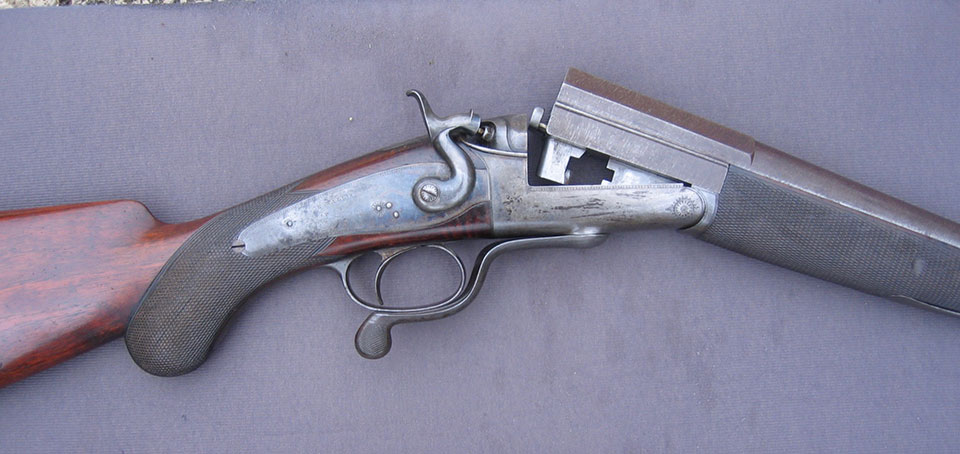I must admit, I’m late to the party. Other writers have been admiring single barrel guns of late and it got me reflecting on this, the poor cousin of the vintage gun family.
Simon Reinhold recently write about the fun to be had walking teh hedges with but one cartridge to engage your bird, should the chance arise. Cyril Adams, who died last year, sadly, spent his twilight years shooting birds with a single barrel shotgun.
Cyril’s view was; you get one chance and so does the bird. Either you win or he does. Cyril thought this a most sporting arrangement. If you ever saw Cyril shoot, you would know that the bird was very much at a disadvantage, even as his adversary approached eighty years of age! One friend described Cyril’s single Grant as a “windshield wiper” (he is American), “sweeping birds out of the sky one at a time”.

Now, we may not all achieve anything like the prowess with a shotgun that a champion Helice shot like Cyril did, but I think we can all appreciate the sentiment. As commercial shooting gets ever more like anti-aircraft gunnery, there is a case to be made for simpler times and gentler sport.
Our forefathers walked-up wild birds, over spaniels or pointing dogs, with simple sporting guns; often single-barrelled flintlocks or percussion guns. Each bird offered an opportunity. Each miss required a moment of reflection, time to stop and re-load, peruse the scenery for the next move, absorb the sport. Shooting them was not sustained ak-ak fire at mile-high dots, hoping one in ten may succumb to a pellet or two. This was shooting as healthy exercise.
The walking, the observation of the dogs, the plan about how to hunt the terrain, given the prevailing weather conditions, all played a part.
The fact that you were equipped with a gun that offered you just the one chance to snatch victory and bring home that snipe, or woodcock, or pheasant, added to the sporting nature of the endeavour.
driven shooting and its demand for rapid fire drove the single barrel gun into the shadows
Single sporting shotguns were relatively commonplace in the flintlock and percussion eras. Once breech-loaders became popular, in the late 1850s, single guns gave way to doubles and then the popularity of driven shooting and its demand for rapid fire drove the single barrel gun into the shadows. They became the preserve of the farmer, the gamekeeper, the child or the poacher.
Single barrel breech loading shotguns do not feature much in sporting literature. However, they were made and they are still to be found. They can, in fact, often be found standing un-loved and ignored in the corner of a gun-room or the racks of a gun shop. Few people seem to want them.
Looking now at one of my own, it strikes me that is it actually a very well made and attractive little gun. Were I a fifteen-year-old with some land and a dog, bereft of modern electrical distractions, this would be a valued and delightful companion for me for years.
It is a 16-bore by Hughes, actually a Birmingham made gun retailed by a provincial gun shop or ironmonger but well made all the same. The rebounding back-lock, post 1875 proof marks and overall style suggest a manufacture date of around 1880. It has been re-proved for 2 1/2” nitro and the 30” barrels of ‘scelp’, which is a one-iron twist barrel, made like Damascus but less intricate.
Engraving is sparse and simple scrolls but the trigger guard is perfectly filed and graceful of form, faultlessly inlet into the stock and the trigger is filed and smoothed for the right hand index finger. The Jones under-lever is subtly profiled and well-fitted. Where lock plates meed wood, the edges are seamless and tight. The forend snaps on and has a horn finial.

The stock is straight handed and cast about 1/8” off. Bringing to to bear, the eye looks straight down the squared off breech section, acting as a quarter-rib, down the ribless barrel to the front bead. It handles like a proper shotgun, yet it weighs a bit less than five pounds.
This type of gun continued in production until about WW1, after which cheap, machine-made alternatives took the market away from them. A gun like the Hughes would have cost between five and six pounds in 1910, while a Harrington & Richardson machine-made alternative was just over a pound and a Belgian folder was one-pound-fifty.
Guns like this don’t cost much money today. I found three or four on Gun Star averaging about £350 each. I was actually surprised to find so few English examples, but the sites were loaded with more modern single guns, like Cooeys, BSA Snipes and Baikals. Gun shops are asking around £50 for these but auctions often sell four or five gaffer-taped together for a tenner!
Intermediate options include 1930s Belgian folders, often in .410 or .20-bore. You could also look at Webley bolt-action .410s, which can still be had for under £100.Then there is a Greener GP, a Martini-action shotgun, with which you can pretend you are about to defend Rourke’s Drift, while waiting for the pigeons to flight into your wood. However, none of these are a patch on the kind of late 19th century hammer single barrel guns represented by the Hughes.
Perhaps the most expensive single-barrel shotgun you might find on which to splurge your COVID grant would be a Purdey trap gun. These were made, mostly for the American market in the 1950s, and the most elaborate ones now hit the marked priced at £50,000 or more. However, that is a subject for another day.
Published by Vintage Guns Ltd on




